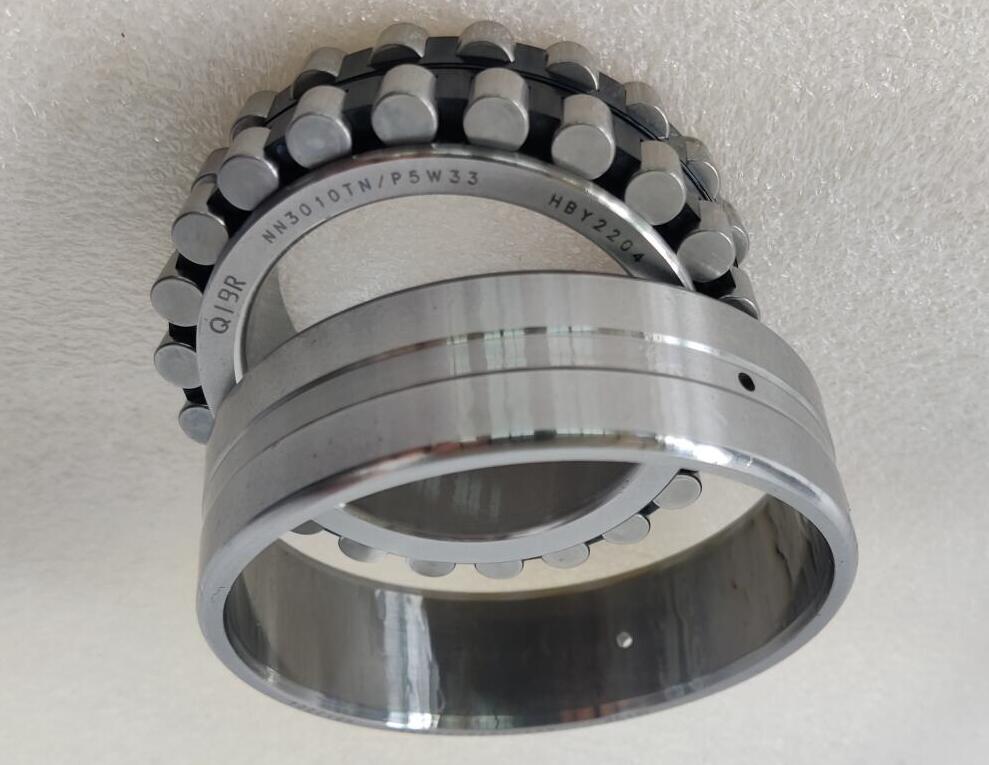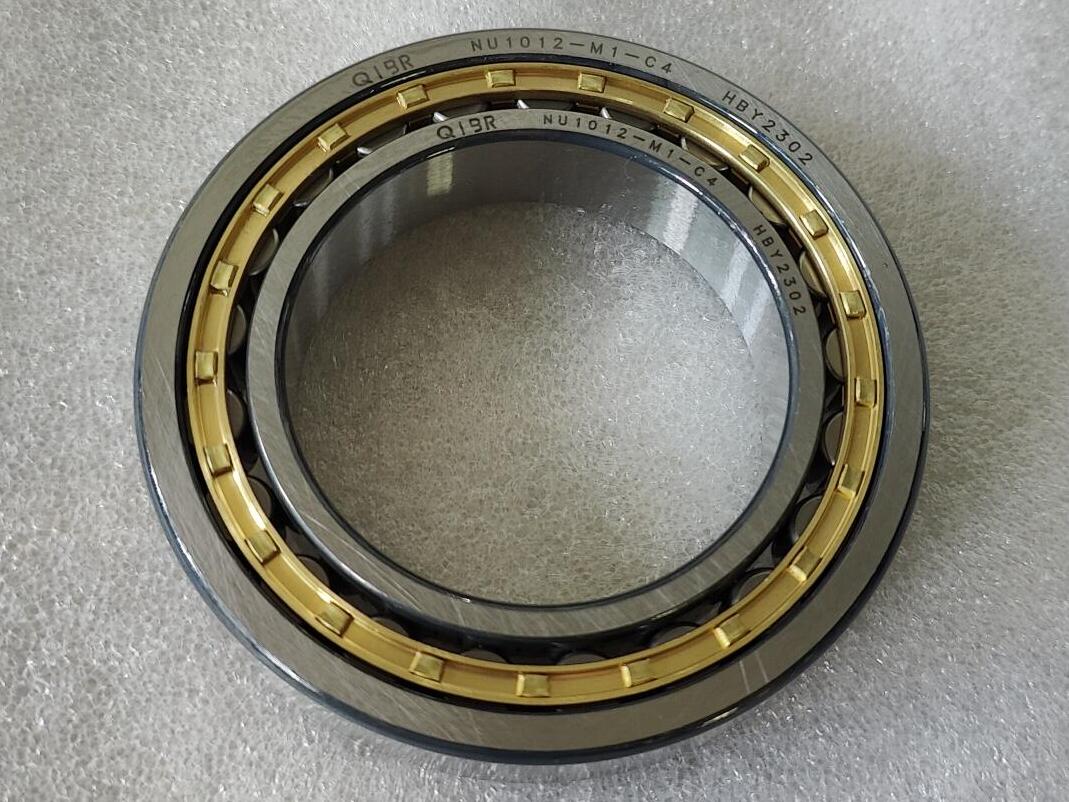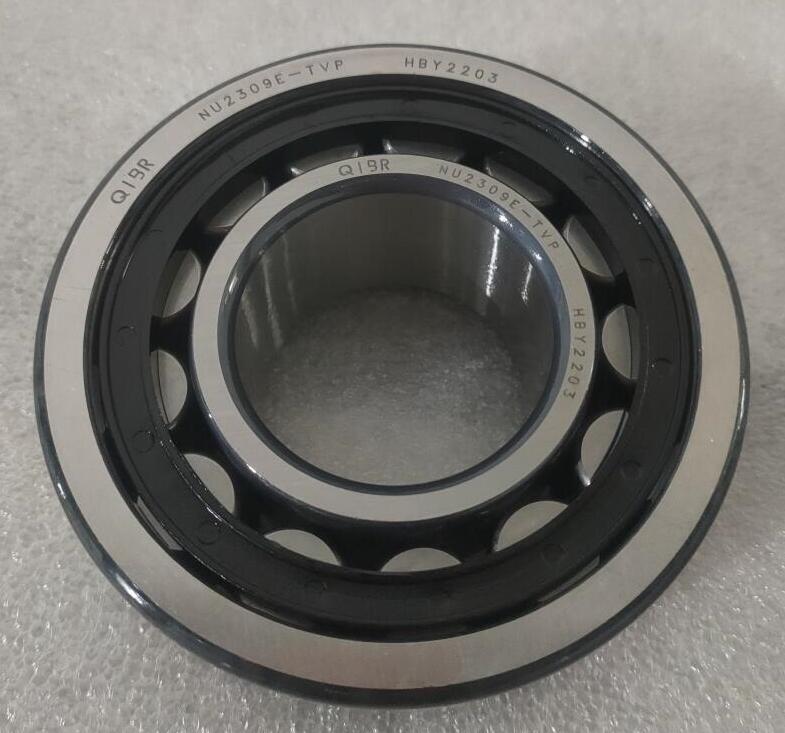Newsroom
Области применения высокоточных цилиндрических роликоподшипников
2022-06-10Высокоточные цилиндрические роликоподшипники, характеризующиеся низким коэффициентом трения, высокой жесткостью и стабильностью размеров, в основном используются в сценариях, требующих строгой точности вращения и равномерного распределения нагрузки. Ниже приводится анализ отраслей промышленности, типов оборудования и технических требований, проиллюстрированный типичными случаями:

I. Прецизионное оборудование и станки
1. Опора шпинделя для обрабатывающих центров с ЧПУ
l История применения:
Скорость вращения шпинделя в обрабатывающих центрах обычно составляет от 10 000 до 20 000 об/мин, при этом требуется радиальное биение ≤ 5 мкм и осевой люфт ≤ 2 мкм для обеспечения шероховатости поверхности (Ra ≤ 0,8 мкм) прецизионных деталей (например, лопаток авиадвигателей).
· Выбор модели:
Высокоточные цилиндрические роликоподшипники серии NN30 класса P4 (наружное кольцо без ребер, внутреннее кольцо с конусом 1:12) соединены с упорными подшипниками, в сочетании с системой постоянной температуры шпиндельной коробки (контроль температуры ±0,5℃) для управления тепловой деформацией.
l Случай:
В линейном высокоскоростном обрабатывающем центре DMG HSC 75 используются высокоточные цилиндрические роликовые подшипники, обеспечивающие радиальное биение ≤ 3 мкм при 30 000 об/мин.
2. Опора вала шлифовального круга и направляющая рейка в шлифовальных станках
l Сценарий применения:
Наружные цилиндрические шлифовальные станки (например, M1432B) требуют округлости заготовок ≤ 1 мкм, радиального зазора в подшипниках 5-10 мкм и способности выдерживать переменные радиальные нагрузки (500-1000 Н) от усилий шлифования.
· Техническое преимущество:
Погрешность прямолинейности роликов высокоточных цилиндрических роликовых подшипников составляет ≤1 мкм, а шероховатость поверхности дорожки качения - Ra ≤0,2 мкм, что уменьшает волнистость, вызванную вибрацией при шлифовании (например, волнистость поверхности детали уменьшается с 0,5 мкм у обычных подшипников до 0,1 мкм у высокоточных). 
II. Аэрокосмическое и высокотехнологичное оборудование
1. Системы вспомогательного привода авиадвигателей
· Условия эксплуатации:
Вспомогательные редукторы (например, топливные насосы, приводные валы масляных насосов) вращаются со скоростью 15 000-25 000 об/мин, испытывая радиальные центробежные силы (коэффициент нагрузки 1,2-1,8) и переменные нагрузки от зацепления шестерен, при этом срок службы должен составлять ≥5 000 часов (эквивалентно 500 взлетам и посадкам для гражданских самолетов).
· Специальная конструкция:
Используются керамические ролики (Si3N4) и электроизолированные покрытия (для предотвращения коррозии от тока вала). Например, в подшипниках привода вспомогательных агрегатов двигателя GE9X используются подшипники класса 2 по стандарту ISO 1 (допуск на диаметр роликов ±0,5 мкм), что позволяет снизить уровень вибрационного шума (≤75 дБ).
2. Маховики для управления положением спутников
· Ключевые показатели:
Маховики вращаются со скоростью 2 000-5 000 об/мин, требуя стабильности углового момента ≤0,01°/с и срока службы ≥10 лет (без обслуживания в космосе). Это достигается за счет вакуумной смазки (твердая смазочная пленка) и высокоточного контроля зазора (радиальный зазор 2-5 мкм).
· Пример модели:
В маховике ориентации телескопа «Хаббл» используются высокоточные цилиндрические роликовые подшипники класса P2 с металлическим сепаратором (радиационно-стойкие), которые безотказно работают на орбите в течение 20 лет.
III. Оборудование для производства полупроводников
1. Прецизионные направляющие для этапа литографии
· Требования к точности:
Стадия 7-нм литографических машин требует точности перемещения ±1 нм, радиального биения подшипников ≤0,1 мкм и устойчивости к загрязнению частицами (размер частиц ≤0,1 мкм) в условиях чистых помещений (класс ISO 1).
· Техническое решение:
Используются высокоточные цилиндрические роликоподшипники (допуск размера класса IT2) с магнитными уплотнениями. Например, в машинах для EUV-литографии ASML используются подшипники FAG K180×190×25 с DLC-покрытием (алмазоподобный углерод), снижающим коэффициент трения до 0,005.
2. Вращающиеся ступени для оборудования для контроля вафель
· Сценарий применения:
Вращающаяся ступень оборудования для контроля дефектов пластин (например, KLA Tencor) должна поддерживать плоскостность ≤10 нм при 3 000 об/мин. Для бесконтактной смазки используются двухрядные цилиндрические роликоподшипники типа NN класса P4 в сочетании с опорами статического давления воздуха (давление воздуха 0,5 МПа).

IV. Медицинские и оптические приборы
1. Роторы оборудования для магнитно-резонансной томографии (МРТ)
· Особые требования:
Роторы сверхпроводящих магнитов оборудования МРТ 3Т и выше вращаются со скоростью 60-120 об/мин, что требует полной немагнитности (во избежание интерференции магнитного поля). В подшипниках используются цельнокерамические материалы (ZrO2) с реманентностью ≤10 Гаусс и шумом вибрации ≤40 дБ (для комфорта пациента).
· Случай:
В опоре ротора МРТ Siemens MAGNETOM Vida 3T используются керамические цилиндрические роликоподшипники SKF с самосмазывающейся конструкцией (пористый масляный накопитель), обеспечивающие 20 000 часов работы без технического обслуживания.
2. Приводные валы экваториальных монтировок астрономических телескопов
· Прецизионные индикаторы:
Крупные радиотелескопы (например, FAST) требуют точности слежения ≤0,1 арксекунды, при этом радиальный зазор подшипников контролируется на уровне 1-3 мкм. Для достижения плавного вращения со скоростью 0,001°/с они используются в паре с высокоточными червячными редукторами.
· Конфигурация подшипника:
Используются двухрядные цилиндрические роликоподшипники (класс P2) с конструкцией предварительного натяга. Например, в экваториальной монтировке телескопа Кек используются подшипники NSK NN3040K/P2 в сочетании с системой температурной компенсации (контроль температуры ±0,1℃) для устранения тепловой деформации.
V. Ключевые соображения при выборе высокоточных цилиндрических роликоподшипников
Сценарий применения | Требования к критическим параметрам | Типичный класс точности | Особые потребности в дизайне |
|---|---|---|---|
Шпиндели для станков | Скорость ≥15 000 об/мин, радиальное биение ≤5 мкм | P4/P5 | Внутреннее кольцо с конической посадкой (1:12), туманная смазка |
Аэрокосмическая промышленность | Устойчивость к экстремальным температурам (-50℃~+120℃), немагнитные | P2/ISO 1 class | Керамические ролики, сепаратор на металлической основе |
Полупроводниковое оборудование | Класс чистоты ISO 1, коэффициент трения ≤0,01 | P4/P2 | DLC-покрытие, магнитное уплотнение жидкости |
Медицинские инструменты | Немагнитный, низкий уровень шума ≤45 дБ | P4/P2 | Цельнокерамические материалы, самосмазывающаяся конструкция |


